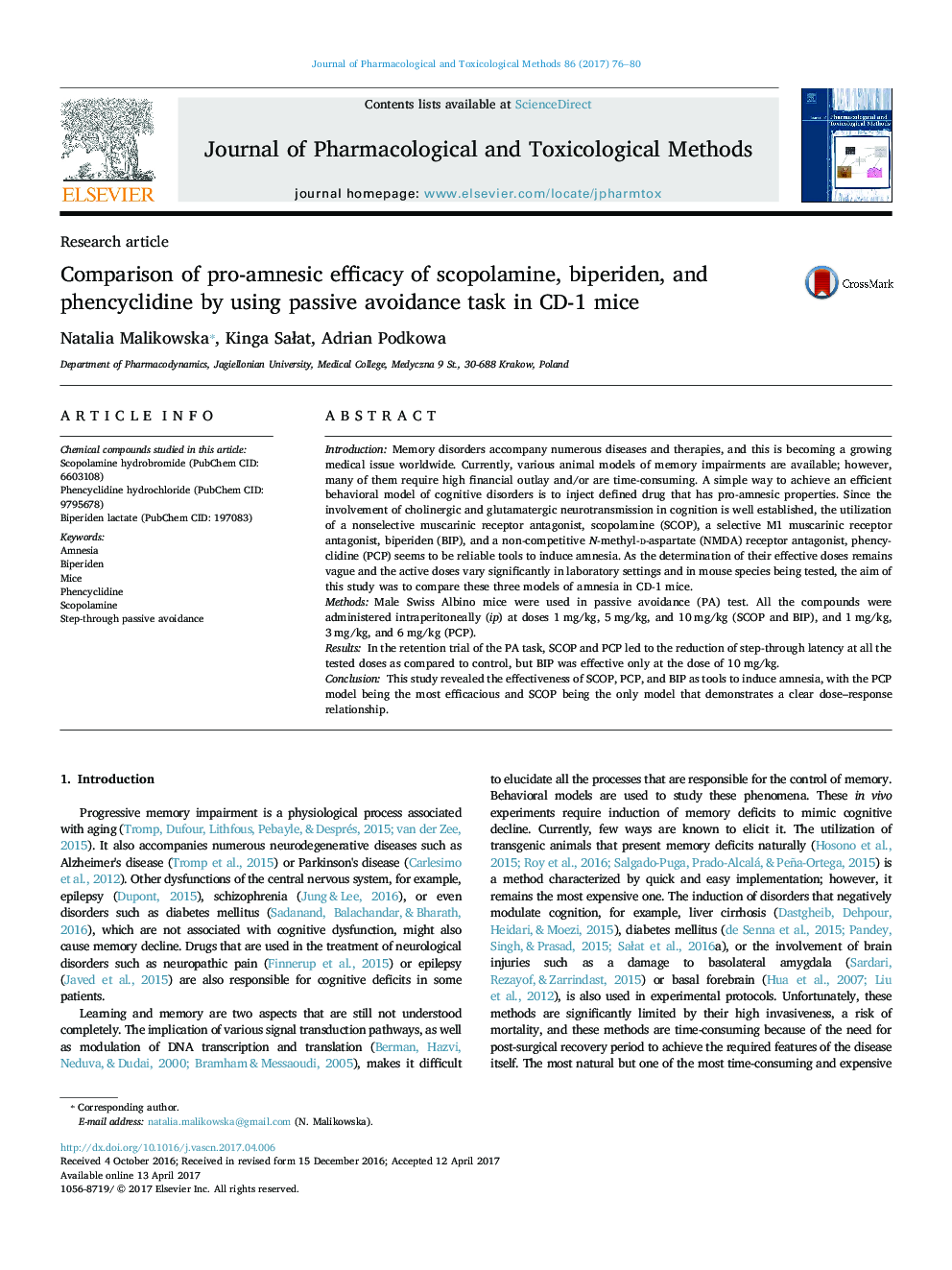| Article ID | Journal | Published Year | Pages | File Type |
|---|---|---|---|---|
| 5556569 | Journal of Pharmacological and Toxicological Methods | 2017 | 5 Pages |
IntroductionMemory disorders accompany numerous diseases and therapies, and this is becoming a growing medical issue worldwide. Currently, various animal models of memory impairments are available; however, many of them require high financial outlay and/or are time-consuming. A simple way to achieve an efficient behavioral model of cognitive disorders is to inject defined drug that has pro-amnesic properties. Since the involvement of cholinergic and glutamatergic neurotransmission in cognition is well established, the utilization of a nonselective muscarinic receptor antagonist, scopolamine (SCOP), a selective M1 muscarinic receptor antagonist, biperiden (BIP), and a non-competitive N-methyl-d-aspartate (NMDA) receptor antagonist, phencyclidine (PCP) seems to be reliable tools to induce amnesia. As the determination of their effective doses remains vague and the active doses vary significantly in laboratory settings and in mouse species being tested, the aim of this study was to compare these three models of amnesia in CD-1 mice.MethodsMale Swiss Albino mice were used in passive avoidance (PA) test. All the compounds were administered intraperitoneally (ip) at doses 1Â mg/kg, 5Â mg/kg, and 10Â mg/kg (SCOP and BIP), and 1Â mg/kg, 3Â mg/kg, and 6Â mg/kg (PCP).ResultsIn the retention trial of the PA task, SCOP and PCP led to the reduction of step-through latency at all the tested doses as compared to control, but BIP was effective only at the dose of 10Â mg/kg.ConclusionThis study revealed the effectiveness of SCOP, PCP, and BIP as tools to induce amnesia, with the PCP model being the most efficacious and SCOP being the only model that demonstrates a clear dose-response relationship.
